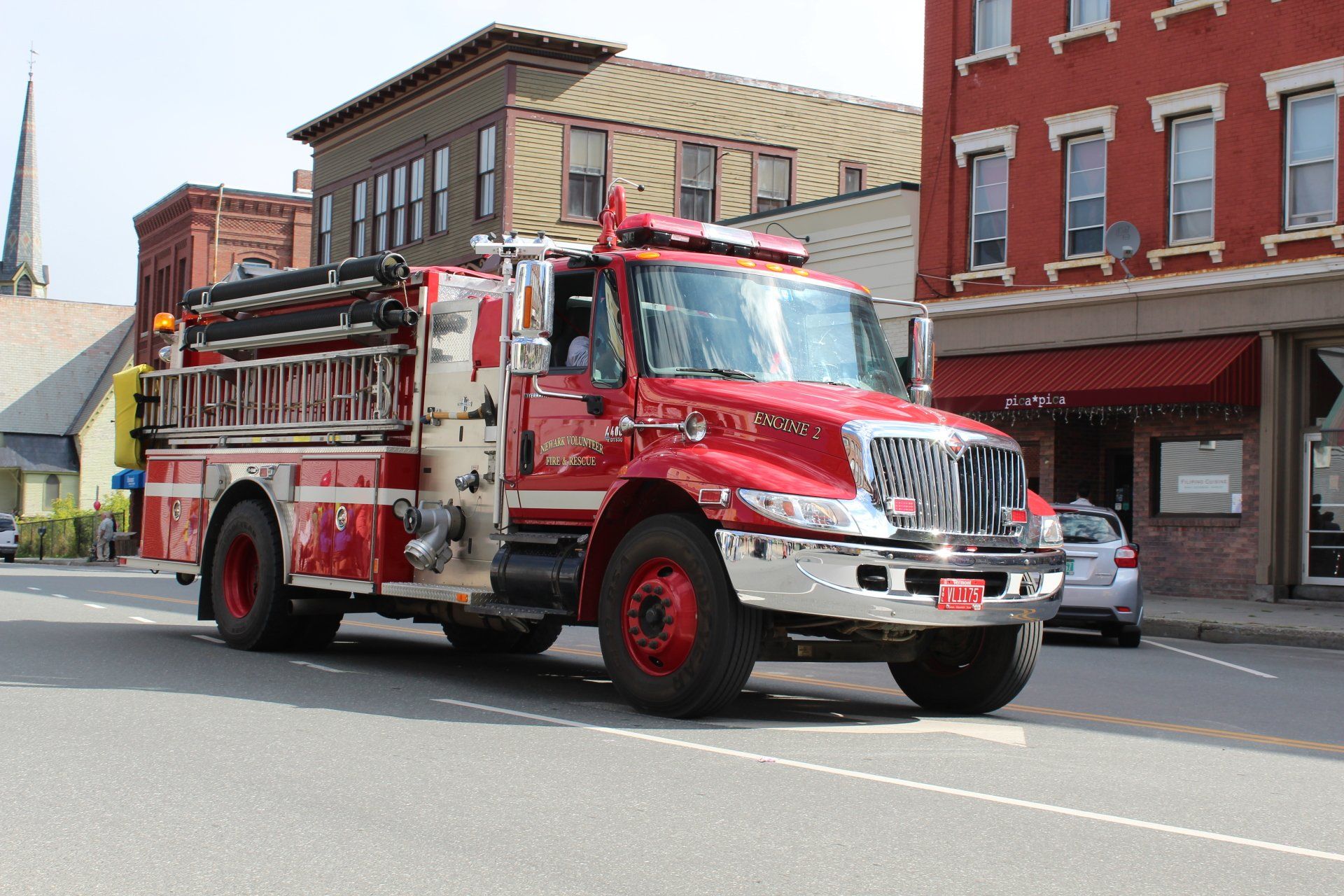Fire Safety
Fire Prevention Week Covers the Following Topics:
SAFETY TIPS FOR KIDS:
- If there is a fire in your home, there will be smoke.
- A smoke alarm will let you know there is a fire.
- A smoke alarm makes a loud noise- BEEP, BEEP, BEEP
- When the smoke alarm sounds, get outside and stay outside.
- When you go home today, be a smoke alarm detective:
- Ask a grown-up to show you where the smoke alarms are in your home
- Ask a grown-up to test the smoke alarms to make sure they are working
SAFETY TIPS FOR ADULTS:
- Smoke alarms should be installed on every level of the home (including the basement), outside each sleeping area, and inside each bedroom. Larger homes may need additional smoke alarms. Never remove or disable smoke alarms.
- Interconnection of smoke alarms is highly recommended; when one smoke alarm sounds, they all do. This is particularly important in larger or multi-story homes, where the sound from distant smoke alarms may be reduced to the point that it may not be loud enough to provide proper warning, especially for sleeping individuals. A licensed electrician can install hard-wired multi-station alarms. Wireless alarms, which manufacturers have more recently begun producing, can be installed by the homeowner.
- There are two types of smoke alarm technologies- Ionization and Photoelectric. An ionization smoke alarm is generally more responsive to flaming fires, like a pan fire or the smoke from cooking. A photoelectric alarm is generally more responsive to smoldering fires, like a cigarette, overheated wiring, or something hot like a space heater. Install both types of alarms in your home or a combination of ionization and photoelectric that take advantage of both technologies.
- Test smoke alarms at least monthly by pushing the test button. If an alarm “chirps” warning the battery is low, replace the battery right away.
- All smoke alarms, including alarms that use the 10-year batteries and those that are hardwired alarms, should be replaced when they are 10 years old (or sooner) if they do not respond properly when tested.
- Never remove or disable a smoke alarm.
SMOKE ALARMS FOR THE DEAF AND HARD OF HEARING:
Smoke alarms with strobes or the ability to be used with strobes, also called visible notification appliances, signal to awaken those that are deaf (those with profound hearing loss). The use of tactile notification appliances (such as a pillow or bed shaker) are also now required and activated by the sound of the smoke alarm. This means, for signaling to awaken those that are hard of hearing (those with mild to severe hearing loss) the use of low-frequency audible signals is necessary. Smoke alarms currently on the market do not produce this signal. However, separate notification appliances are available that do produce this signal and are activated by the sound of the smoke alarm.
FAST FACTS ABOUT SMOKE ALARMS AND FIRE:
- Smoke alarms cut the risk of dying in a reported fire in half.
- Most homes (96%) have at least one smoke alarm (according to a 2008 telephone survey).
- Overall, three-quarters of all U.S. homes have at least one working smoke alarm.
- Each year, nearly 3,000 people die in U.S. home fires.
- In 2003-2006 roughly two-thirds of home fire deaths resulted from home fires in homes with no smoke alarms or no working smoke alarms.
- In more than half of the reported home fires in which the smoke alarms were present but did not operate even though the fire was large enough, batteries were missing or disconnected. Nuisance alarms were the leading reason for disconnected alarms.
- More than half the smoke alarms found in reported fires and two-thirds of the alarms found in homes with fire deaths were powered by battery only.
- Most homes still have alarms powered by battery only. In a 2007 American Housing Study (AHS), 67% of the respondents who reported having smoke alarms said they were powered by battery only.
- In a 2008 telephone survey, only 12% knew that smoke alarms should be replaced every 10 years.
- In fires considered large enough to activate a smoke alarm, hardwired alarms operated 91% of the time; battery-powered smoke alarms operated 75% of the time.
- Interconnected smoke alarms on
- all floors increase safety. In a Consumer Product Safety Commission (CPSC) survey of households with any fires, interconnected smoke alarms were more likely to operate and alert occupants to a fire. (This includes fires in which the fire department was not called)
FIRE:
- Cooking is the #1 cause of home fires and injuries.
- Smoking is the leading cause of fire deaths
- Heating is the second leading cause of home fires, fire deaths, and fire injuries
- Electrical failures or malfunctions are factors in roughly 50,000 reported fires each year.
- Roughly 30,000 intentionally set home structure fires are reported every year
IN 2008:
- U.S. Fire Departments responded to 386,500 home fires.
- Home fires killed 2,755 people and injured 13,160.
- Someone was injured in a reported home fire every 40 minutes.
- Roughly eight people died in home fires every day.
- A fire department responded to a home fire every 82 seconds.
- 83% of all fire deaths and 79% of fire injuries resulted from home fires.
More Fire Safety Tips from the St. Johnsbury Fire Dept.
A fire can strike your home or work at any time. Are you and your family prepared?
Create a Home Escape Plan
- Escape planning can help you get out of your home faster if there is a fire.
Creating Escape Plans for Apartment Dwellers
- If you live in an apartment you still need a plan to get out of there is a fire in the building.
Home Smoke Detectors
- Smoke detectors save lives every year. Do you have smoke detectors installed outside every sleeping area in you home?


